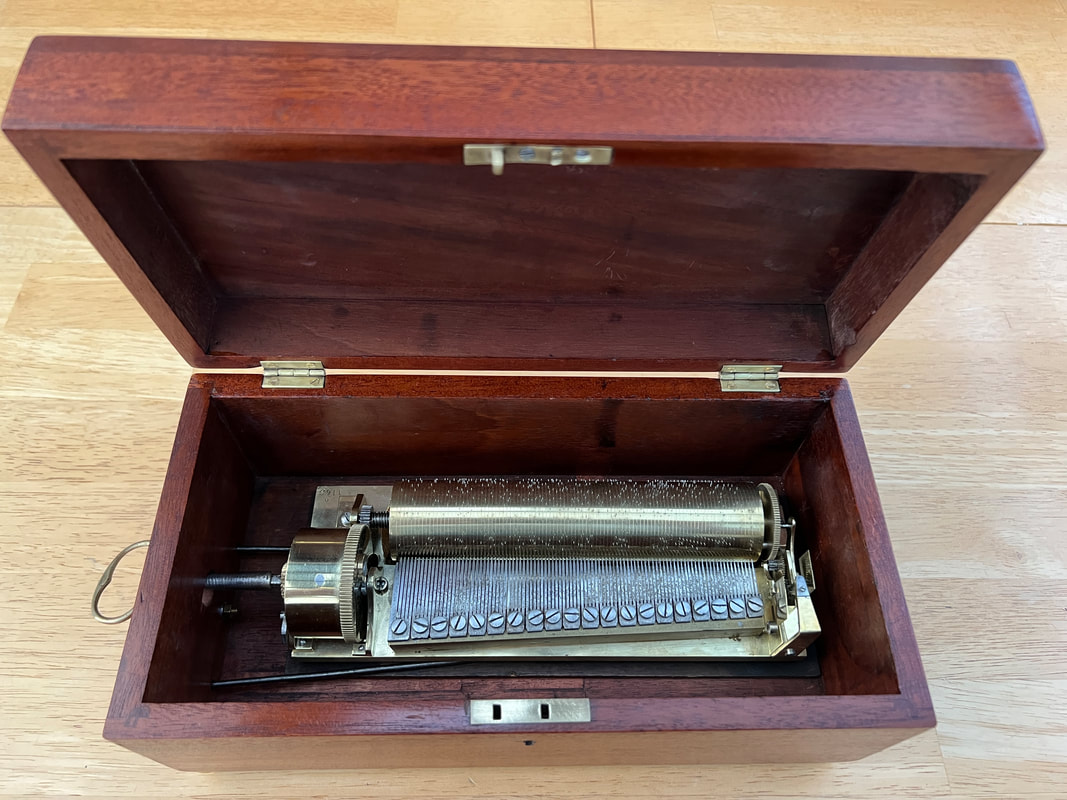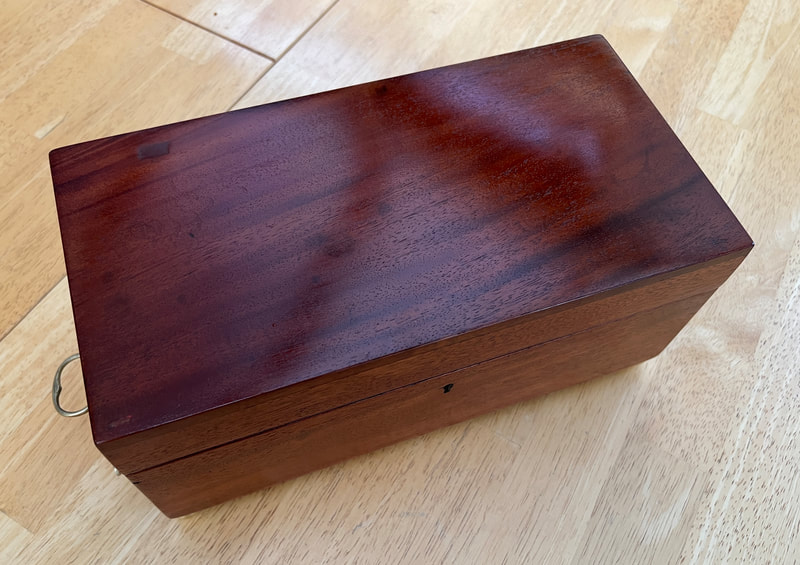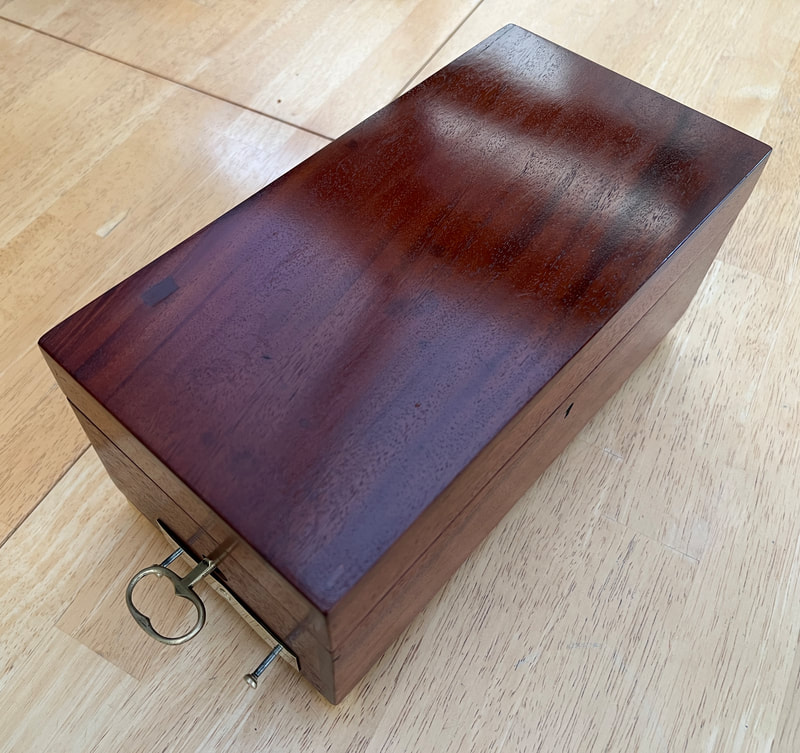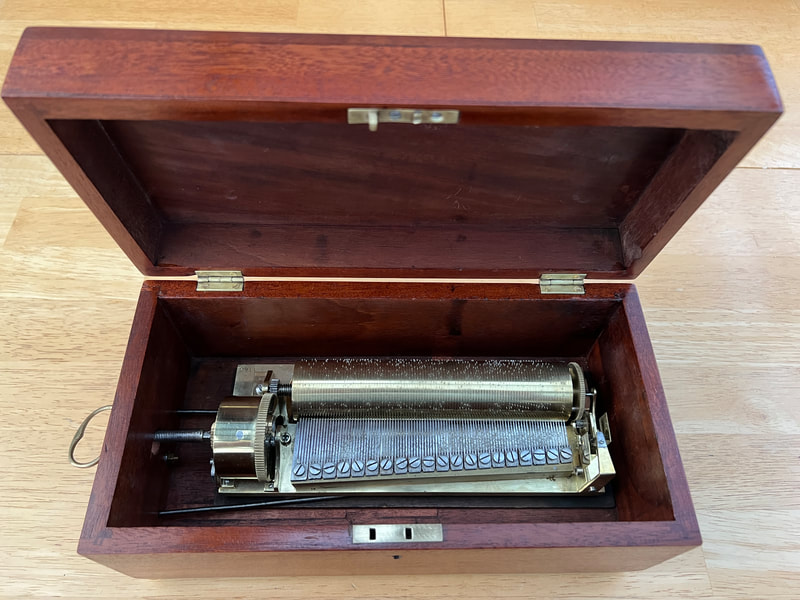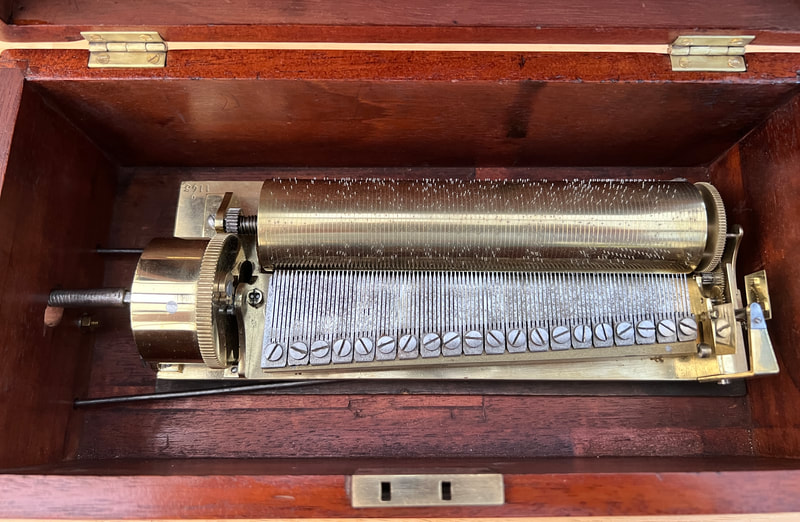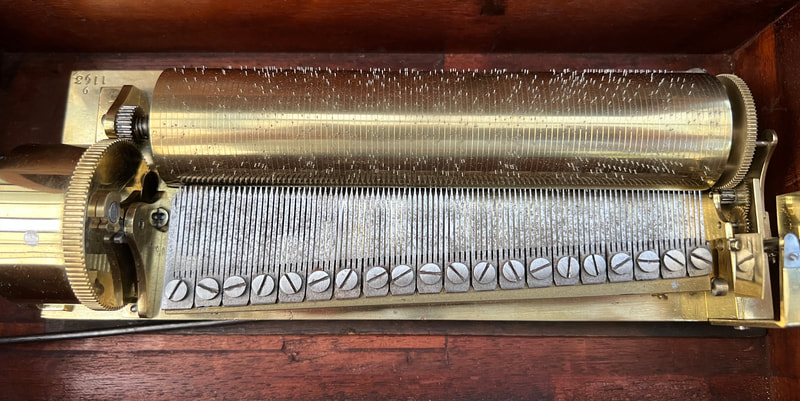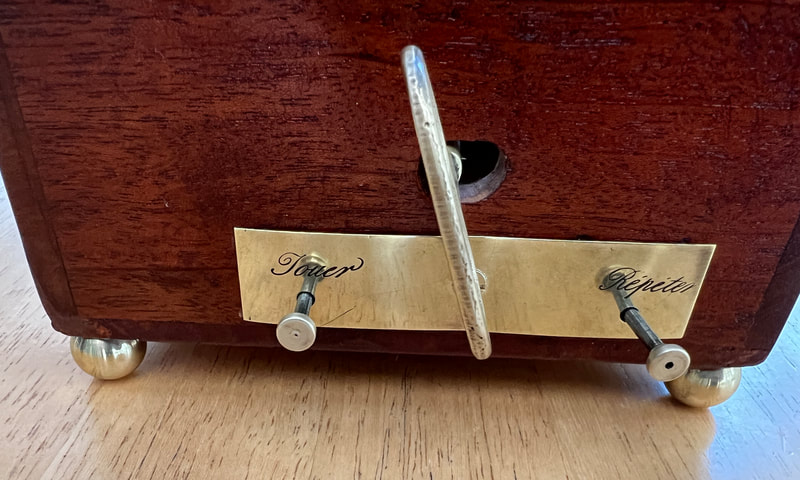3/99 Sectional Comb Cartel circa 1825
I bought this movement at Wessex auction in November 2022. It's was in an intriguing musical base (see restoration diary for details), which probably supported a domed display of some sort or possibly housed a clock linked to the musical movement.
The small cartel movement has a sectional comb with 19 x 5 notes on each with the final treble having 4 notes as a tooth is missing.
The cylinder is 163 mm x 36 mm dia and the bedplate is 224 mm x 81 mm
The condition was pretty much unspoilt for something approaching its 200th birthday.
It plays three delightful tunes, all about 45 seconds long,
One has been identified to be from the Opera Dame Blanch (1825). See below.
The underside of the cylinder was very shiny compared to the top, so it may have been cleaned and then stored, or just stored.
There was one strange lever that did not appear to do anything so was probably part of the link to the clock mechanism.
On close inspection I found that there were no missing teeth. Although there appears to one missing on the treble end, there are no pins to strike it so it's supposed to be missing.
There were less than a dozen slightly bent pins on the cylinder, and NONE MISSING. There were no missing dampers either. Amazing considering the age of this mechanism. Where has it been?
The big question was "what to do with it" in terms of restoration? Apart from cleaning and servicing, there was not much to do.
I didn't need a clock base, or domed display, so I installed it in a suitable box that once held scientific instruments.
Now back from The Music Box Restorer for a tooth repair, alignment and setting in register.
See recording of all three tunes below.
See it in the workshop
The small cartel movement has a sectional comb with 19 x 5 notes on each with the final treble having 4 notes as a tooth is missing.
The cylinder is 163 mm x 36 mm dia and the bedplate is 224 mm x 81 mm
The condition was pretty much unspoilt for something approaching its 200th birthday.
It plays three delightful tunes, all about 45 seconds long,
One has been identified to be from the Opera Dame Blanch (1825). See below.
The underside of the cylinder was very shiny compared to the top, so it may have been cleaned and then stored, or just stored.
There was one strange lever that did not appear to do anything so was probably part of the link to the clock mechanism.
On close inspection I found that there were no missing teeth. Although there appears to one missing on the treble end, there are no pins to strike it so it's supposed to be missing.
There were less than a dozen slightly bent pins on the cylinder, and NONE MISSING. There were no missing dampers either. Amazing considering the age of this mechanism. Where has it been?
The big question was "what to do with it" in terms of restoration? Apart from cleaning and servicing, there was not much to do.
I didn't need a clock base, or domed display, so I installed it in a suitable box that once held scientific instruments.
Now back from The Music Box Restorer for a tooth repair, alignment and setting in register.
See recording of all three tunes below.
See it in the workshop
Can you identify the tunes? Contact me if you can please.
Below are videos of the three tunes - before restoration of the mechanism.
Thanks to Thomas Tht for identifying one already.
Thanks to Thomas Tht for identifying one already.
|
|
|
Tune 2
Ah! Quel plaisir d'être soldat
Opera Dame Blanch Composed by Boieldieu Francois-Aden First performed 10th December 1825 by the Opera-Comique at the Theatre Feydeau in Paris Translates as:
Ah, the Joys of Being A Soldier from the Opera White Lady |
La dame blanche (The White Lady) is an opéra comique in three acts by the French composer François-Adrien Boieldieu. The libretto was written by Eugène Scribe and is based on episodes from no fewer than five works of the Scottish writer Sir Walter Scott, including his novels Guy Mannering (1815), The Monastery (1820), and The Abbot (1820). The opera has typical elements of the Romantic in its Gothic mode, including an exotic Scottish locale, a lost heir, a mysterious castle, a hidden fortune, and a ghost, in this case benevolent. The work was one of the first attempts to introduce the fantastic into opera and is a model for works such as Giacomo Meyerbeer's Robert le diable (1831) and Charles Gounod's Faust (1859). The opera's musical style also heavily influenced later operas like Lucia di Lammermoor, I puritani and La jolie fille de Perth.
La dame blanche was first performed on 10 December 1825 by the Opéra-Comique at the Théâtre Feydeau in Paris. It was a major success and became a standby of the 19th century operatic repertory in France and Germany. By 1862, the Opéra-Comique had given more than 1,000 performances of La dame blanche.
It was first performed in England in English as The White Lady at the Drury Lane Theatre on 9 October 1826, and in the United States in French at the Théâtre d'Orléans on 6 February 1827.
The opera's popularity began to diminish towards the very end of the 19th century and performances since have been rare. It was revived in Paris in 1996 by the conductor Marc Minkowski and in 2020 at the Opéra Comique.
La dame blanche was first performed on 10 December 1825 by the Opéra-Comique at the Théâtre Feydeau in Paris. It was a major success and became a standby of the 19th century operatic repertory in France and Germany. By 1862, the Opéra-Comique had given more than 1,000 performances of La dame blanche.
It was first performed in England in English as The White Lady at the Drury Lane Theatre on 9 October 1826, and in the United States in French at the Théâtre d'Orléans on 6 February 1827.
The opera's popularity began to diminish towards the very end of the 19th century and performances since have been rare. It was revived in Paris in 1996 by the conductor Marc Minkowski and in 2020 at the Opéra Comique.
|
Tune 1
|
Tune 3
|
After comb restoration and setting in register, here are all three tunes in one clip.
